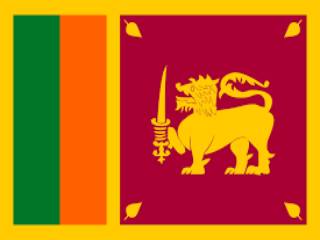Bhadrapad Shuddha Shashthi, Kaliyug Varsha 5111
The word leadership as enunciated in fundamental business texts has, by and large, been non-existent in Indian politics. Like most educated, middle-class Indians, I, too, have a healthy distaste for most Indian politicians and believe that but for a handful of honourable exceptions most of them would put even the rats to shame, in a rat race. So when I first met Narendra Modi, I went in with my usual healthy cynicism about Indian politicians, which was imbued in me from childhood.
However, a few minutes into the meeting, we realized—not just me but even the foreigners in the team—that this man was powerfully different. For starters, rather than sprouting inane statements such as “we will remove poverty by the end of my tenure”, he was spot on with his facts and insights. He spread out a map of the state and literally went over it, highway by highway, city by city, explaining his vision, the needs of the state and the opportunity from an investor’s perspective. He was cogent, persuasive and decisive—traits that we all look for in our political leadership, but seldom find.
The proof of the pudding, as the old adage goes, is in the eating, and not in armchair theorizing. The professionalism of Modi and his entire team, not just those immediately around him, but even those in remote districts, impressed us enormously. We were met punctually by sarpanches, or village chiefs (sometimes in trendy, torn jeans), with detailed survey maps of land, zealous young collectors marketing their districts as if there was no tomorrow, remote regions connected by two- and four-lane highways that made the US I-95 I was used to look antediluvian, and most importantly, a population eager to do dhanda (business).
Arguments proffered by sociologists such as Dipankar Gupta and other academics trying to punch holes in the Gujarat development story are only partially correct and thus misleading. There is no gainsaying the fact that Gujarat has been an industrially progressive state for several decades, but what we are seeing now is different and in order of magnitude, higher and richer growth which cannot be all attributed to the past alone. By that reasoning, Maharashtra, which has closely mirrored Gujarat’s industrialization figures in many ways, should be seeing the same spectacular growth today as Gujarat, which it is not. Growth is far more complex and is a result of several complex vectors such as institutions, policies, incentives, resources, capital, entrepreneurship and last but not least, leadership—a factor most contemporary research does not explain adequately yet.
Consider statistics obtained from the Central Statistical Organisation (CSO), state government and other published data, which tell a very different story. According to a December report published by none other than the high priest of individual liberty, free markets and peace, the Cato Institute, the average rate of growth of Gujarat’s gross domestic product (GDP) went from a good 5.8% (1980-90) to 8.15% (1991-99) to 10.14% (2000-06).
CSO estimates that when one looks at industrial development, the output value went up from Rs7,160 crore (1980-81) to Rs27,593 crore (1990-91) to Rs307,955 crore (2005-06) in the state, and the corresponding value for net value added by industry went up from Rs1,139 crore to Rs4,468 crore to Rs47,953 crore during the same period. Likewise, the Union ministry of industry, through its department of industrial policy and promotion, maintains a record of what it calls the Industrial Entrepreneurial Memorandum, under the Industries (Development and Regulation) Act, 1951, based on the actual permissions taken to set up industry in a state; this registered spectacular growth from Rs8,224 crore (1991) to Rs10,561 crore (2001) to Rs1.1 trillion in 2008. More recent studies by the International Food Policy Research Institute show the ongoing dramatic transformation in agrarian growth rates in Gujarat over the past decade, which has been lauded by it as not just record-breaking in the country but globally as well.
Modi’s leadership and image of someone who can “get things done” in a transparent and clean manner is slowly transforming Gujarat into an economic powerhouse. Frankly, his competition is not from other Indian states any more as it is from, say, a China or a Brazil as a preferred investment destination. Unarguably, many challenges remain. Gujarat needs modern cities and its proposed GIFT city—Gujarat International Finance Tec-City—is beset with several challenges, not the least of which would be financing it in this depressed global economic environment; it needs a more cosmopolitan environment for people to live and work; and a more intense focus on school education where dropout rates remain higher than the national average despite the government’s relentless efforts to improve the quality of education, to name just a few.
The dividing line between nationalism and jingoism of any sort is at best thin. Every country is entitled to its proud nationalism so long as it doesn’t descend into jingoism. Modi needs to ensure that perception is always just a step ahead of performance, which in turn needs to be several steps ahead of the huge expectations which his own success has generated. – Srivatsa Krishna
Srivatsa Krishna is a Harvard MBA and an Indian Administrative Service officer. He writes weekly on business, government, infrastructure and entrepreneurship. The views expressed here are his own.
Source: livemint.com
Also See
 |
Hindu Genocide in Kashmir & Bangladesh
Online photo exhibition of Hindu genocide and temples destruction in Kashmir by local Muslims. |
 |
Mal practices in Ganesh festivalDuring the period of Ganesh festival stop evils entered in the festival. Idols are worshipped in denigrating ways. |




